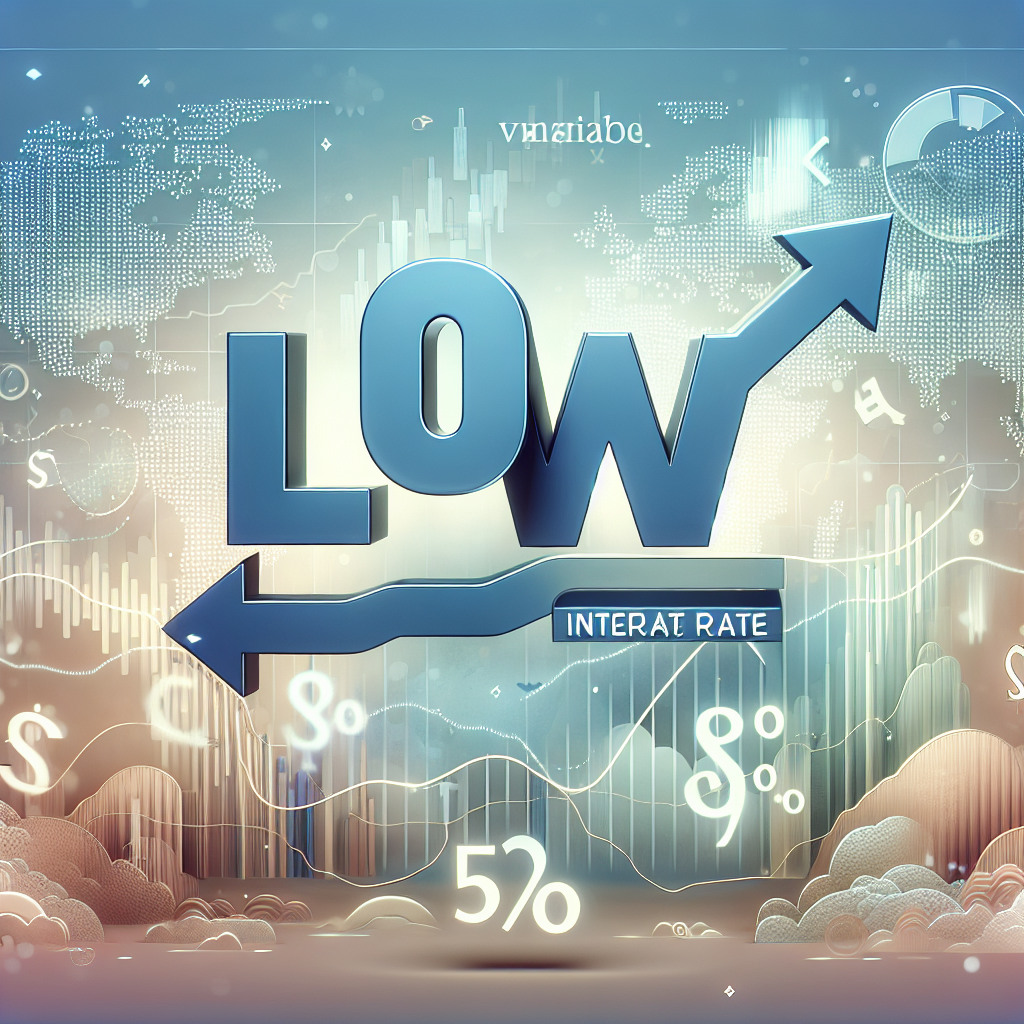
Low variable interest rate
Understanding Low Variable Interest Rates: A Comprehensive Overview
In the world of finance, the terms and conditions of borrowing and lending can often feel overwhelming. One key aspect that determines your repayment costs is the interest rate. Among various types of interest rates, low variable interest rates have gained significant attention, especially in today’s financial environment. In this article, we will delve into what low variable interest rates are, how they work, their benefits and risks, and how they compare to fixed-rate options.
What is a Variable Interest Rate?
A variable interest rate, also known as an adjustable or floating rate, is an interest rate that fluctuates. Typically tied to an underlying benchmark or index, this type of rate can increase or decrease at set intervals. For instance, a loan might have its interest rate adjusted every six months based on prevailing market conditions.
Defining Low Variable Interest Rates
Low variable interest rates are simply variable rates that are lower than average market rates. They are generally offered by lenders aiming to attract borrowers in a competitive landscape. However, understanding the nuances of these rates is essential to making informed financial decisions.
How Low Variable Interest Rates Work
Low variable interest rates often start with an appealing introductory rate, known as the "teaser rate." This can lead to lower initial payments. However, as the market changes, the interest rate can increase significantly, impacting your total repayment amount.
- Initial Rate Period: The lender offers a low rate for a specific time.
- Adjustment Frequency: Rates can be adjusted monthly, quarterly, or yearly.
- Index or Benchmark: Rates change in relation to a defined index, like LIBOR or the Federal Funds Rate.
- Spread: The interest rate will be the index rate plus a margin determined by the lender.
Benefits of Low Variable Interest Rates
Choosing a loan with a low variable interest rate can offer several advantages, including:
- Initial Savings: Borrowers can enjoy lower payments initially compared to fixed-rate loans.
- Market Adjustments: If the market experiences lower interest rates, borrowers can benefit from reduced payments.
- Cost-Effective: Over the life of the loan, a low variable rate can save a borrower money if the rates remain favorable.
Risks Associated with Low Variable Interest Rates
While the benefits may seem enticing, it is crucial to consider the risks:
- Rate Fluctuations: Borrowers may face higher payments if interest rates rise.
- Budget Management: Variable payments can complicate budgeting due to their unpredictability.
- Long-Term Costs: If rates rise significantly, borrowers could end up paying more than if they had chosen a fixed rate.
Comparing Low Variable Interest Rates and Fixed Interest Rates
When considering your financing options, it is essential to weigh the pros and cons of both low variable and fixed interest rates. Below is a comparison chart to assist your decision-making process:
| Feature | Low Variable Interest Rate | Fixed Interest Rate |
|---|---|---|
| Payment Stability | Unstable; Can fluctuate | Stable; Consistent payments |
| Initial Cost | Typically lower | Higher than initial variable |
| Long-term Savings Potential | Possible, but uncertain | Predictable and fixed |
| Market Sensitivity | Highly sensitive | Less sensitive |
| Ideal Borrower | Those with short-term needs or manageable risk | Those seeking stability and predictability |
When to Consider Low Variable Interest Rates
Before deciding on a loan with a low variable interest rate, it is essential to assess your financial situation and long-term goals. Here are some factors to consider:
- Short-Term Financing: If you plan to pay off a loan before the end of the initial low rate period, a low variable interest rate may be advantageous.
- Market Conditions: In a stable or declining interest rate environment, choosing a low variable rate might save you money.
- Risk Tolerance: If you’re comfortable with potential fluctuations in your payments, this option could be suitable for you.
Tips for Managing a Low Variable Interest Rate Loan
If you decide to go with a low variable interest rate, here are some tips to help manage your loan effectively:
- Know Your Rate: Stay informed about how and when your rate can change.
- Consider Rate Caps: Some loans have caps to limit how much your rate can increase.
- Budget for Increases: Prepare for potential increases in payments to avoid financial strain.
Conclusion: Making an Informed Decision
Low variable interest rates come with both enticing benefits and considerable risks. With potential cost savings at the forefront, they can be a suitable option for certain borrowers. However, it is essential to carefully weigh your options, consider market trends, and remain vigilant about any changes in rates. By doing so, you can make an informed decision that aligns with your financial goals.
"Understanding the implications of choosing a low variable interest rate is crucial for financial stability." - Financial Expert
Ultimately, the right choice between a low variable interest rate and a fixed interest rate will depend on your unique circumstances, financial goals, and market conditions. Whether you aim for short-term savings or long-term stability, being well-informed is the key to making the best decision for your financial future.
By Guest, Published on July 26th, 2024